March 21, 2024
The year’s first broad-billed hummingbird careens in, all orange beak and emerald shine. And then a second male, the two corkscrewing through the air in a masculine ballet of aggression. The arrival makes five species of hummingbirds with the resident Anna’s and recent Rivoli’s, broadtail, and rufous pair. The numbers are low but we’re shifting toward the yard’s usual count of thirteen kinds of hummingbirds bookended by the equinoxes.
It will only get better. I’m hoping this summer will bring a life bird to the yard, like a white-eared hummingbird or plain-capped starthroat. It could happen!
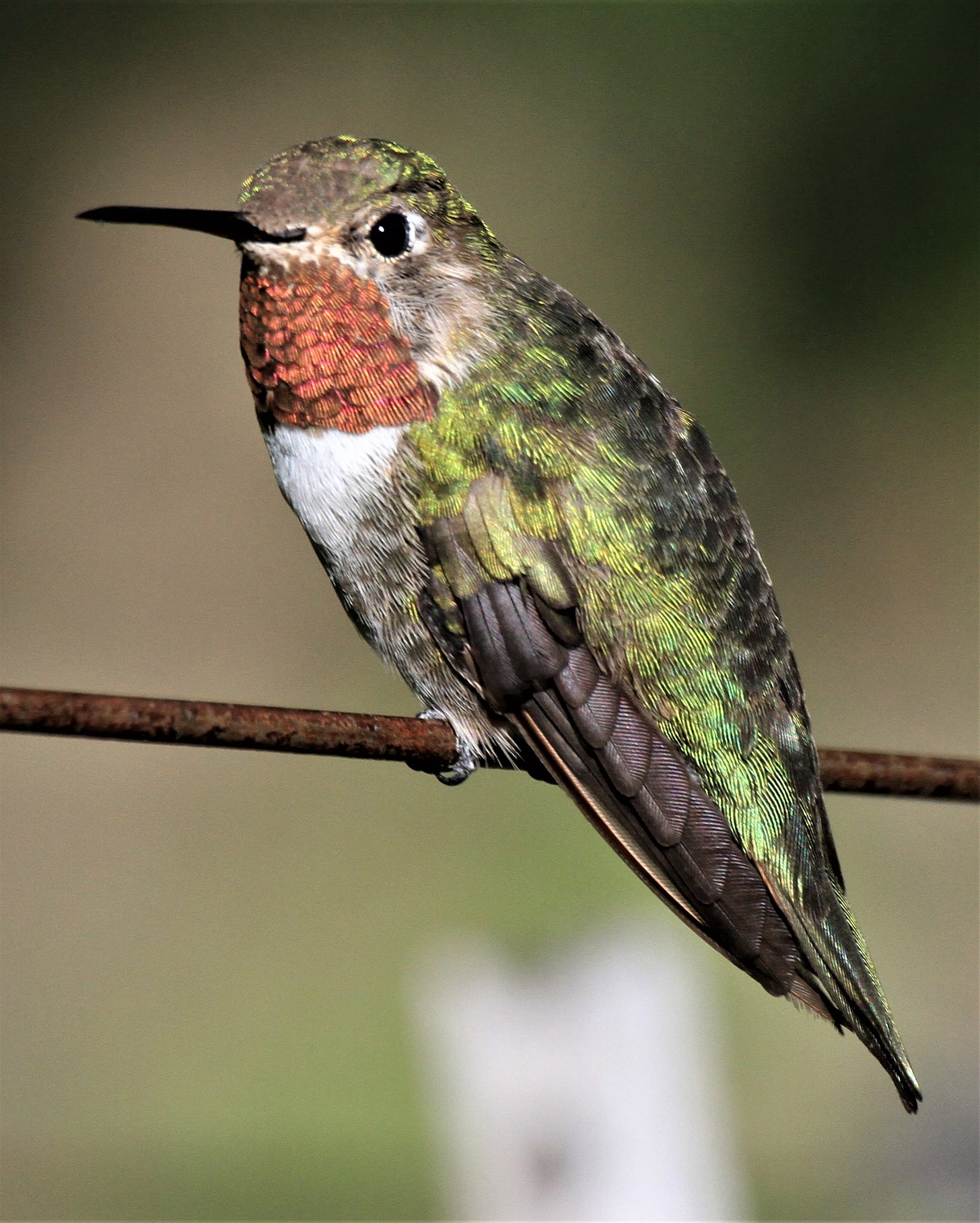
But I can’t watch hummingbirds without thinking of my friend Liz Bernays, who left the world of birds to our care two weeks ago. Liz did so much more than just watch these “little flying laboratories,” as she called them while working as a citizen scientist for the Hummingbird Monitoring Network. The nonprofit grassroots organization has thirty stations from Mexico City to British Columbia and relies on 1500 volunteers. One of the stations is near Patagonia, Arizona, where Liz lived for many years with her partner, Linda. At the station, every two weeks during migration (March through October), Liz assisted with trapping and banding hummingbirds, gathering weight and feather-wear information to gauge their health as the birds traveled between Mexico and Alaska. The information would show whether the birds were adapting to climate change.
Liz believed there was something very right about a planet that created hummingbirds. And she cared enough to work to keep them in the world.
When Liz and Linda lived in Patagonia, I traveled the beaten dirt road to their beautiful straw-bale home. Liz often invited me to stay at their guest house and join her on an early morning trip to band hummingbirds with Susan Wethington at her off-grid place on Harshaw Creek. Susan is one of the founding scientists of the Hummingbird Monitoring Network, which she runs out of her home.
We rose at 4 am and drove in the predawn light to Susan’s solar-powered, rastra home. There, a volunteer had set up two cylindrical mesh curtains he could raise and lower over two hummingbird feeders from the distance of his chair. On her porch, Susan had staged her banding table, instruments, and notebooks. Liz and I took seats and Susan slid a clipboard and datasheets to me. I was to write what Susan relayed. Liz would feed each hummingbird a sip of sugar water before releasing it.
Thirty minutes after sunrise, the volunteer brought the first hummingbird in a mesh bag, clipped it into a contraption like a small umbrella clothesline, and rotated it toward us. Susan slipped on a headlamp magnifier and began reading off letters and numbers. The bird, a male black-chinned hummingbird, weighed less than a penny. Then Susan lifted a tiny band no larger than the O on this page, read off the number, and fit it onto the bird’s leg. When I looked up from the datasheet, another hummingbird hung in its bag.
Five hours later we quit. Liz released the final hummingbird, which rested on her extended fingers then zipped away. Thirty-three hummingbirds. “Fairly light,” Liz said. “Our biggest day was 140.”
I imagined a whirling umbrella clothesline. A hummingbird centrifuge. A spinning world creating hummingbirds because it is the right thing to do.
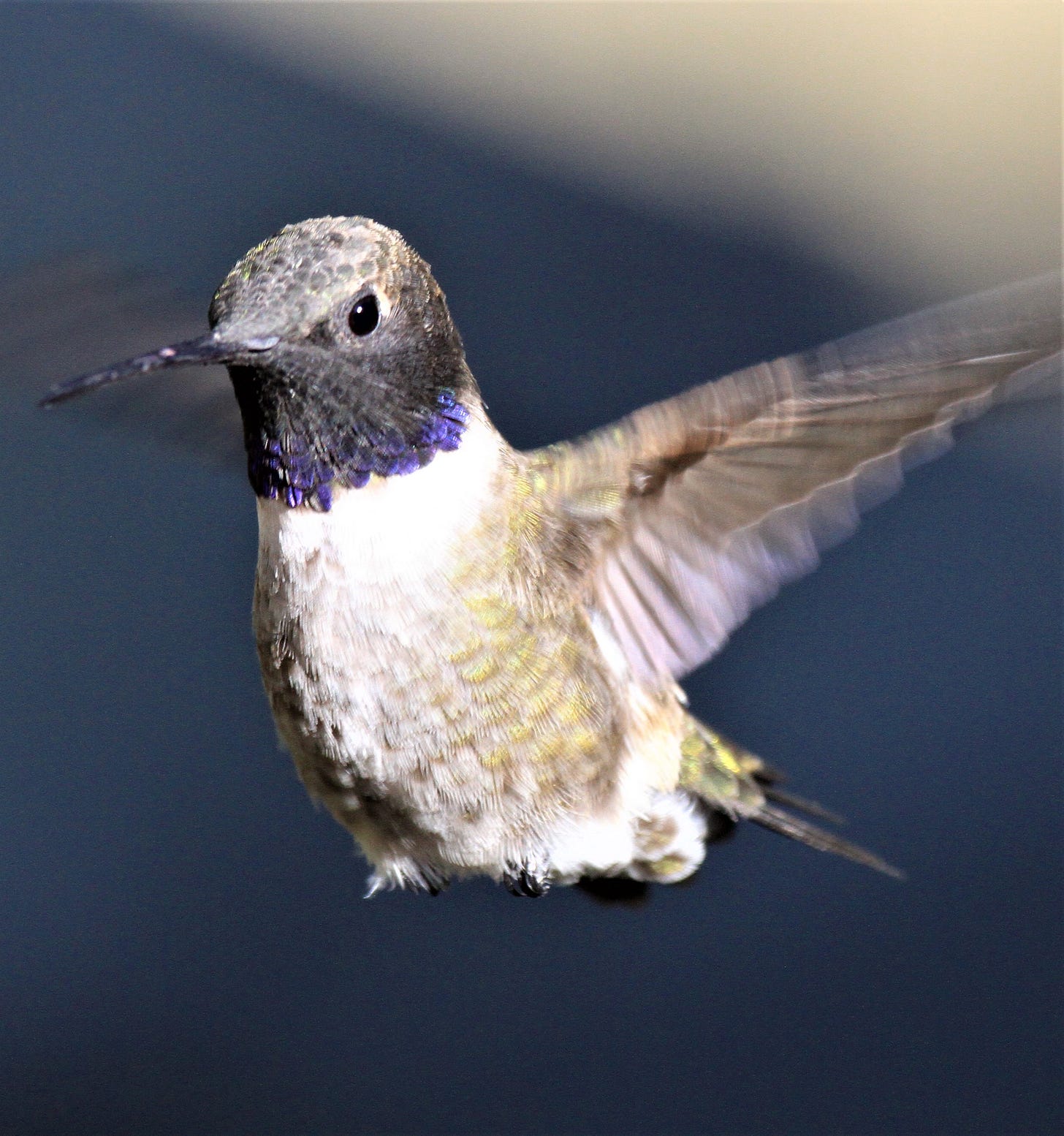
Thanks for subscribing. More birds to come, including an update on activities going on at the new “bigger” yard like a new bridge and meditation garden and a gazebo of trees I’m calling “Oakhenge.”



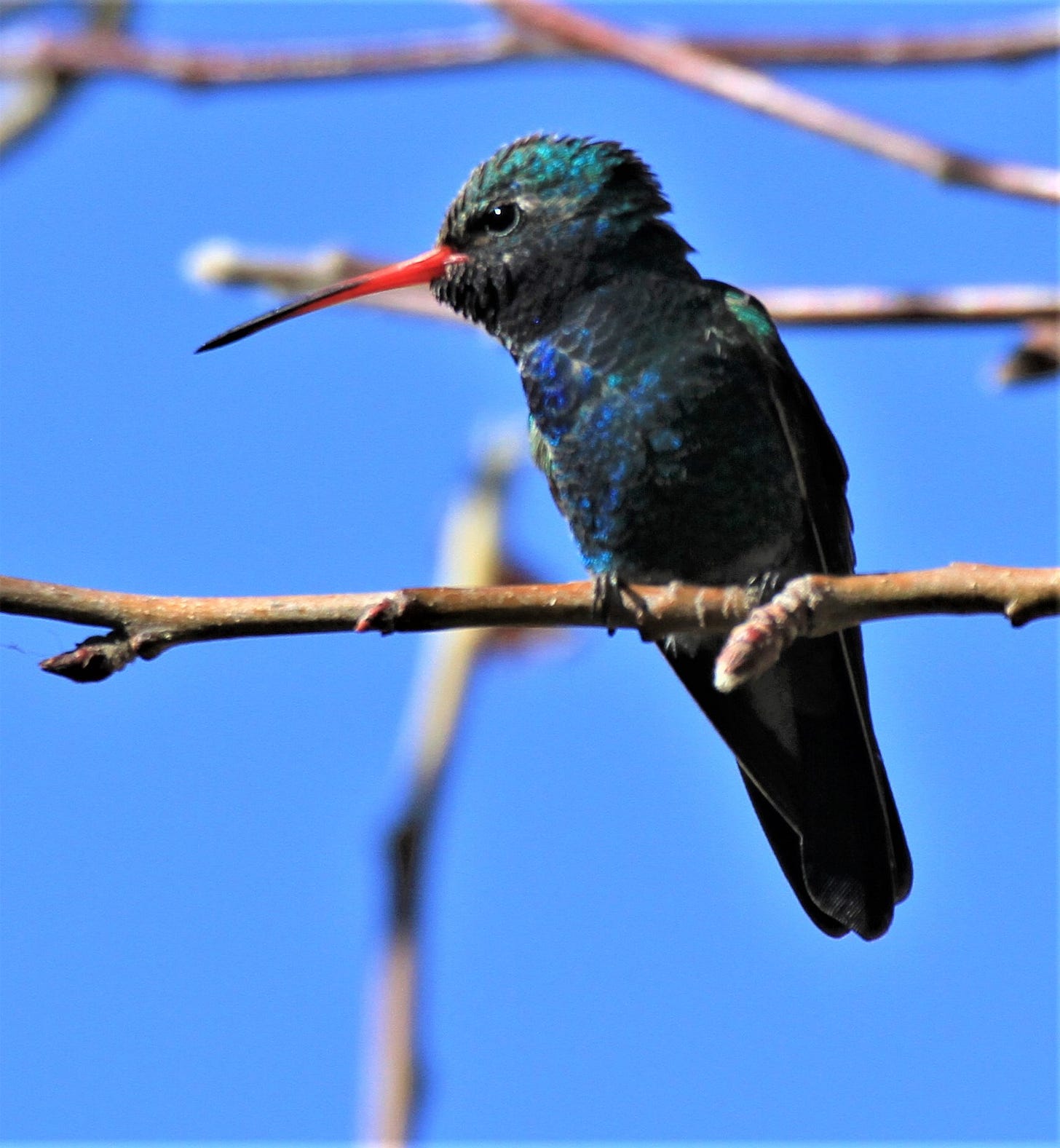
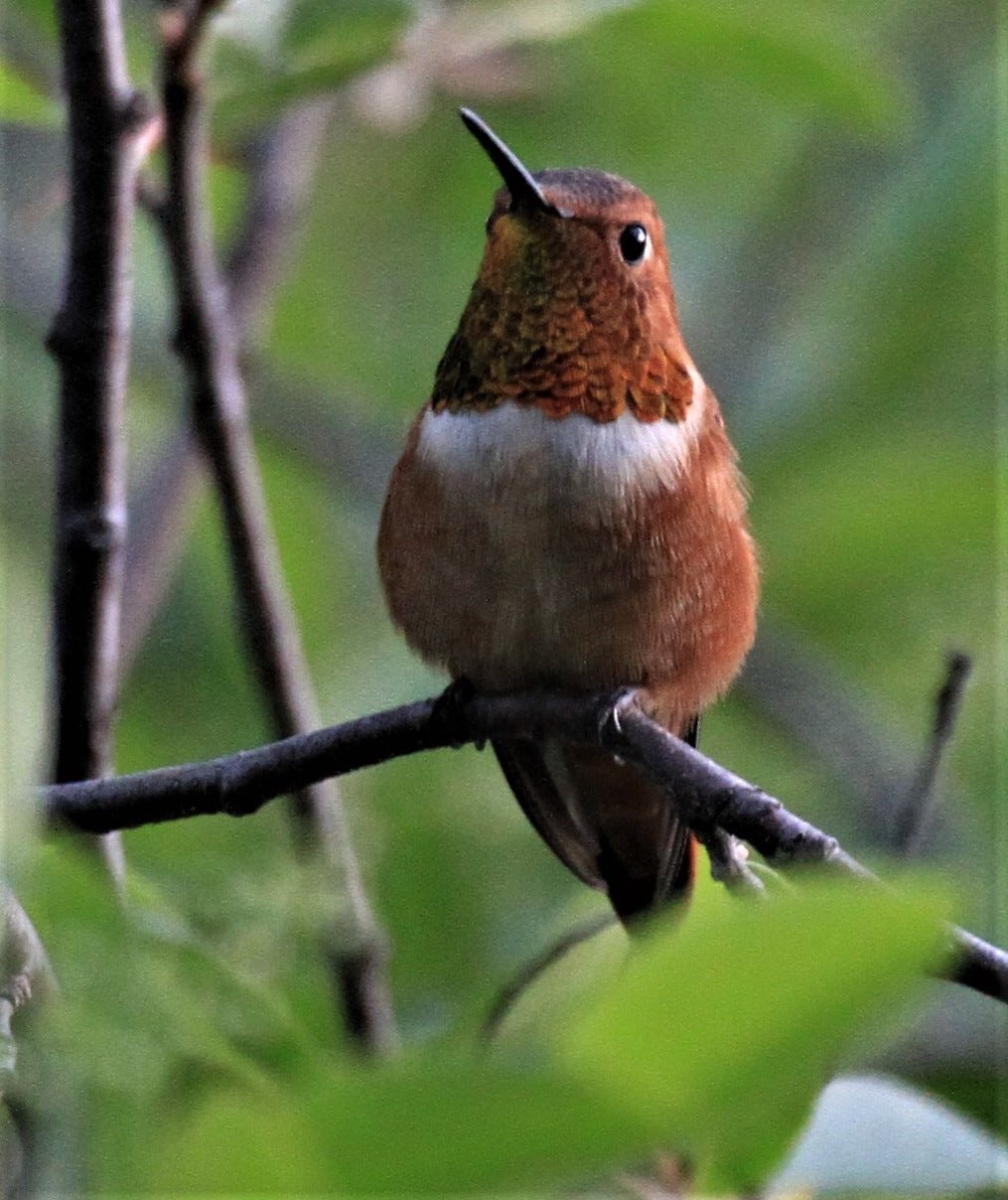
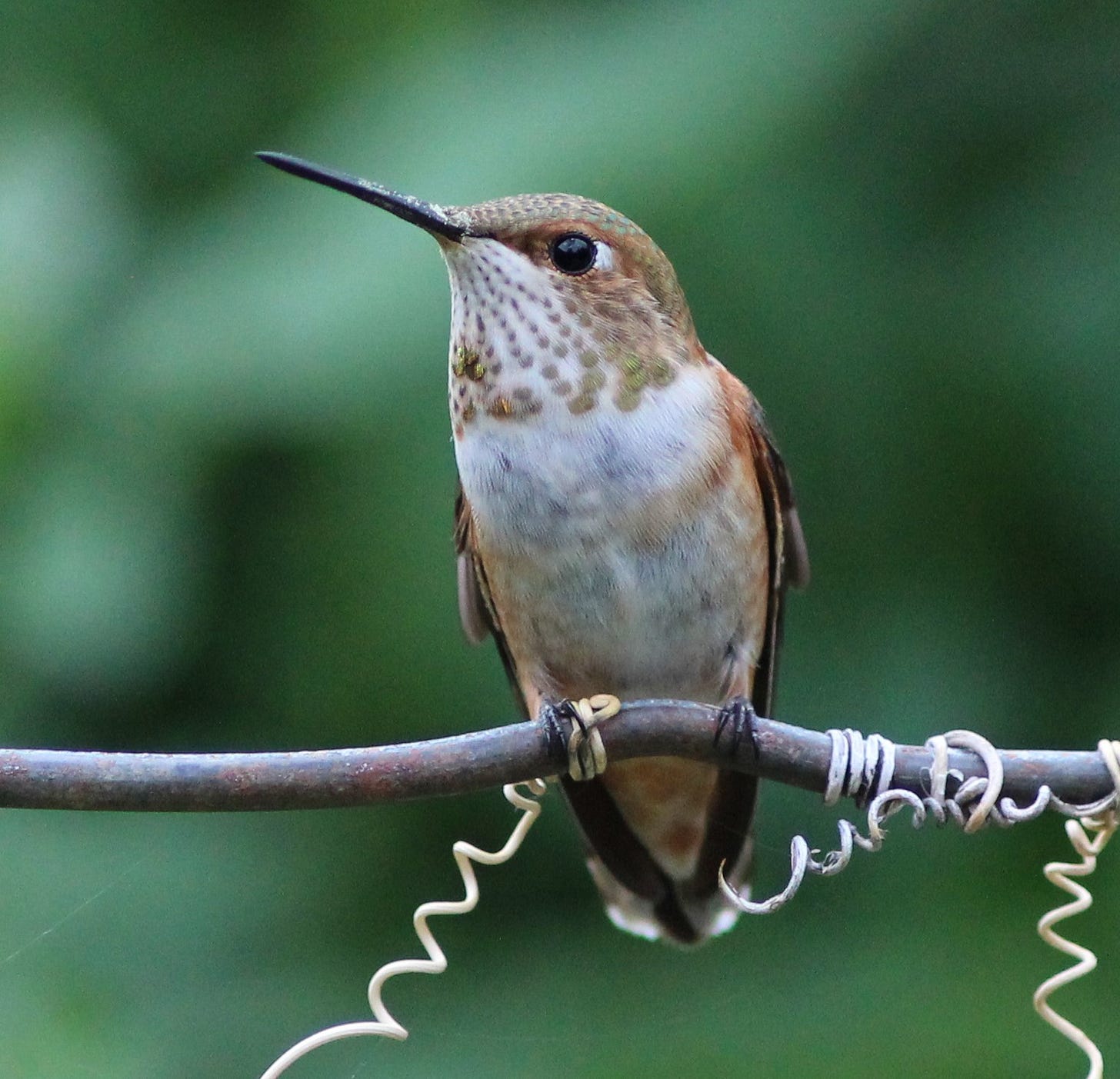
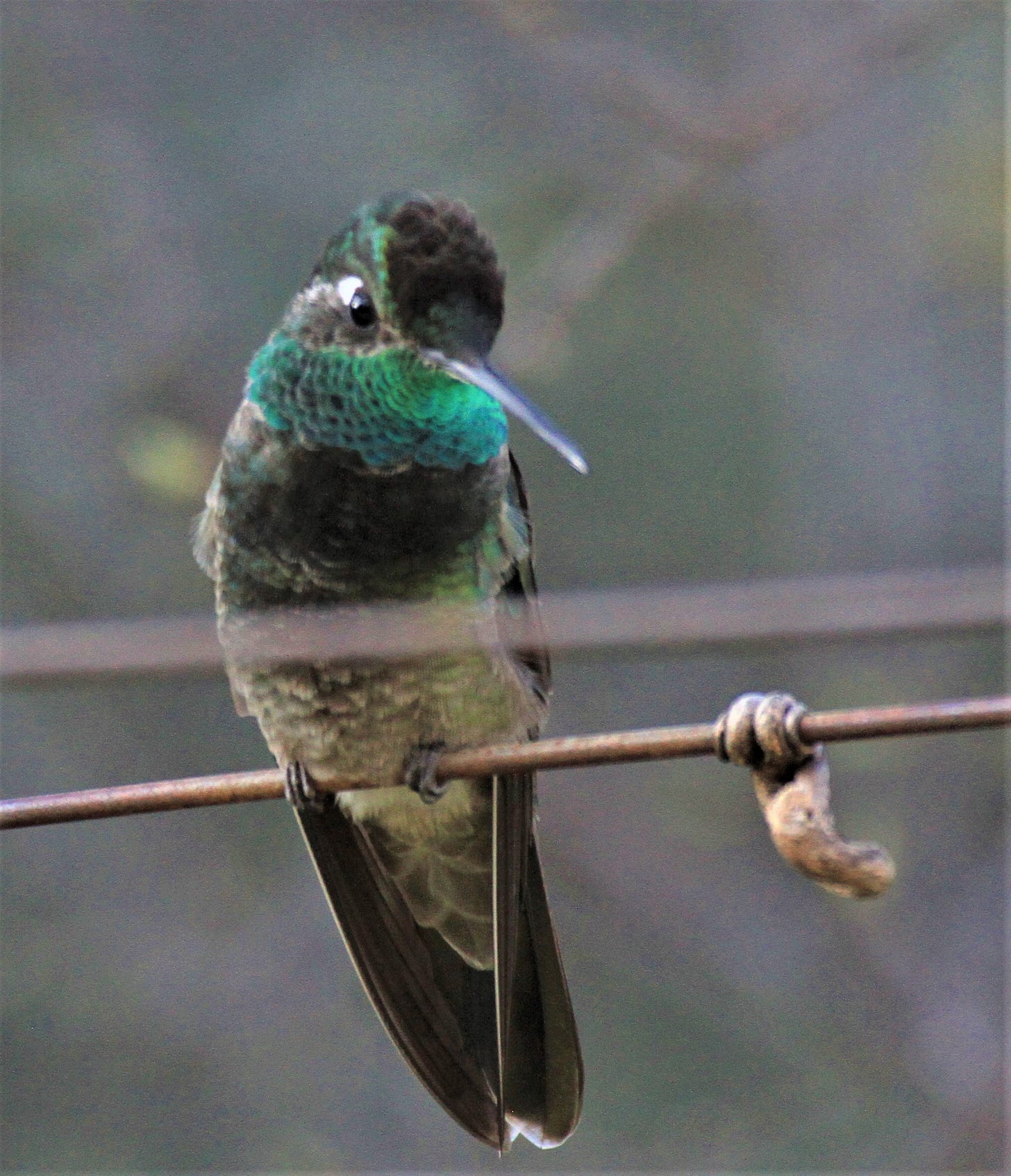

Beautiful photos as always (but especially so with subjects so tiny and which never stand still).
These hummingbirds are so beautiful! I’d love to see any of them just once! Stunning. I’m so glad hummingbirds exist in this world.